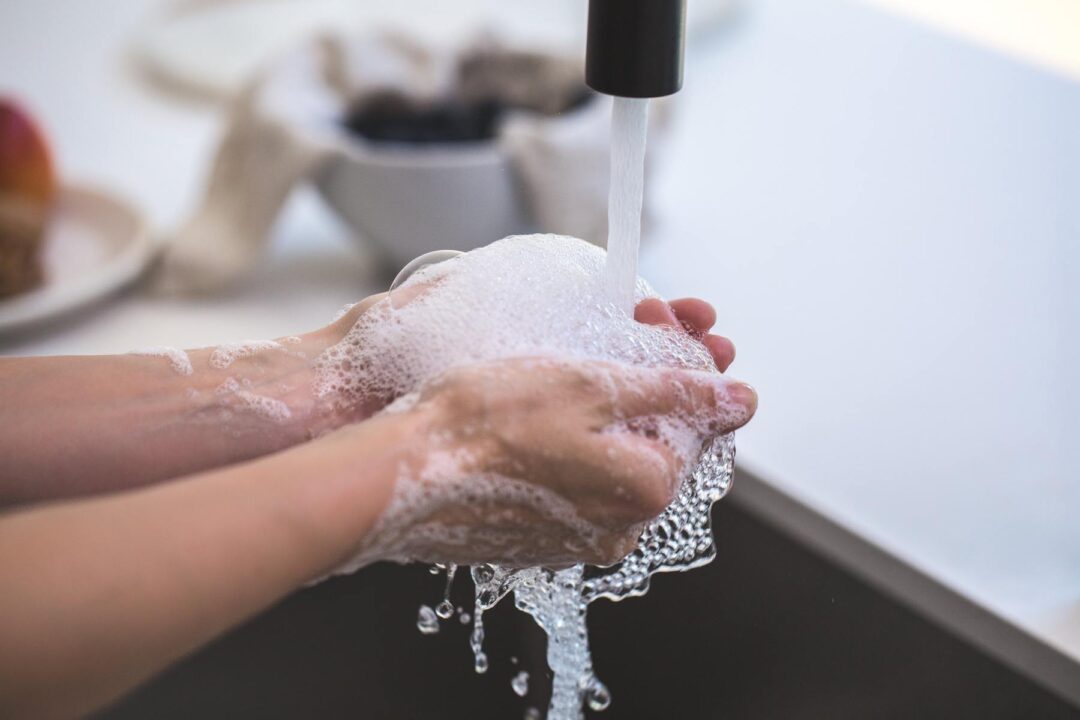Our peer tutoring project had benefits beyond improving maths


Ravensthorpe Primary School is a diverse school and its pupils come from a wide range of social and ethnic minority backgrounds, with almost three quarters of pupils coming from the poorest quartile of postcodes in England.
Pupils who speak English as an Additional Language (EAL) make up half of the school’s roll which is well above the national average (18.7%). The largest groups are those who have arrived in recent years from the eastern regions of the European Union.
In 2015, half of the children in Foundation Stage spoke little or no English. This article explores the impact of peer tutoring as a way of engaging pupils in the learning process and improving their outcomes.
Peer tutoring to raise achievement
Peer tutoring is ‘an approach in which one child instructs another in material on which the first is an expert and the second a novice’ (Damon and Phelps, 1989, p. 11). The University of the First Age (UFA) makes a clear distinction that peer tutoring has learning as its focus. Others define it as ‘a range of approaches in which learners work in pairs … to provide each other with explicit teaching support.’ (Education Endowment Foundation, 2018).
Whilst research demonstrates that the impact of peer tutoring is relatively high with benefits for both tutor and tutee, it was especially successful in cross-age tutoring.
Benefits all round
On first glance, it may seem reasonable to assume that peer tutoring favours those who are tutored. However, studies reveal significant gains can be made by both tutor and tutee. The tutor benefits from reinforcing existing knowledge and gains an insight into the teaching/learning process, whereas the tutee benefits from individualised instruction in a non-threatening, supportive setting (Goodlad and Hirst, 1989).
Research has shown that the examination performance of both primary and secondary students who were tutored was better than the examination performance of students in conventional classrooms, especially for mathematics and reading (Cohen, Kulik and Kulik, 1982, p. 237-248). Indeed, a meta-analysis (Cohen et al., 1982) of findings from 65 independent evaluations of school tutoring programmes showed that these programmes had positive effects on the academic performance and attitudes of those who receive tutoring. Tutored students outperformed control students on examinations, and they also developed positive attitudes toward the subject matter covered in the tutorial programmes.
Whilst research demonstrates that the impact of peer tutoring is relatively high with benefits for both tutor and tutee, it was especially successful in cross-age tutoring. It has also been shown that a two-year gap seems to support both tutee and tutor learning. As such, in consultation with teaching staff we settled on a project to improve the pupils’ instant recall of the times tables facts by matching pupils carefully with the highest-attaining pupils in Y5, pairing up with the highest-attaining pupils in Y3, through to the lowest-attaining pupils in Y5 being matched to the lowest-attaining pupils in Y3 (University of the First Age UFA, 2008). Moreover, we were keen to find out whether there would be additional benefits as reported in other studies, showing that peer tutors demonstrated increased levels of personal development, motivation and confidence (Hammond et al., 2010).
The project
I was keen to consider the following question: What is the effect of peer tutoring for raising achievement in Maths on the tutor and tutee? (Could we teach children how to take on a peer coaching role and get them to support younger children AND what might be the effects?).
I worked with Y5s for two days – explaining peer tutoring and outlining the project. They would become peer tutors and would collaborate with pupils in Y3, helping them to improve their instant recall of multiplication facts. Through discussions, it was clear that many already had some experience of helping others: to read; to learn a new game; to find their way; to tie shoe laces; they had cheered and encouraged others and even listened when there was a problem.
Worries and concerns for tutees
Some of their fears and concerns about becoming a peer tutor included ‘I am scared that I will be put on the spot’; ‘I don’t know all my tables, I might forget when they ask’; ‘What if I teach them the wrong way?’; ‘I may not be as confident as they are.’ One child was worried that others might just sit there and not learn.
A few children had concerns regarding the behaviour of their potential tutees. We established that their concerns had similar themes and were common to many people, as they embark on new ventures – especially trainee teachers. We discussed possible solutions including the many different resources available to help. We set clear ground rules, which included encouraging others, speaking in a positive way and considering how body language conveys messages.
I asked them to reflect on previous successful learning experiences. Most talked about learning how to master a particular skill in football, gymnastics or learning how to swim. We identified the different stages of learning and documented their emotions before, during and after completing each new learning experience.
Encouraging a supportive environment
It was important that the children experienced being a peer tutor in a safe, supportive environment so I set up various problem-solving activities. Those in roles as peer tutors had answers and so were in the ‘coaching’ role. Observers listened carefully and supported the process of reflection. We also explored ‘what ifs’ – for example, what if the peer tutor had just given the answer? Y5s recognised that this would not help the tutee and may even make them feel bad.
We drew up a list of ‘positive learning’ sentence stems and discussed internal ‘self-talk’, which can affect learning. I emphasised that it is possible to change the way they speak to themselves (‘I’m rubbish at it! I can’t do it’) because it affects the way we feel. I stressed the importance of being supportive of learners who feel stuck or scared because negative comments affect mood and inhibit learning.
As the activities progressed, the children were very clear about the differences between telling and coaching. They were good at using encouraging language and in giving precise feedback. I suggested that like athletes, when they meet their Y3 tutee, they should discuss and set a learning target, so that the Y3s could see that they were making progress and improving their own ‘personal bests’.
There was a buzz of excitement, which remained throughout the session.
Research in action
It was agreed that each Y5 child would be paired up with a child from Y3 to support and facilitate the learning of times tables facts in order to develop their instant recall. Both year groups took a timed multiplication test and then were carefully matched, considering each child’s ability and temperament. Given the results of Durham University’s two-year trial, across 129 primary schools, we settled on two sessions per week, lasting 20 minutes.
At their first meeting, the Y5s used their simple questionnaire in order to ‘Get to Know’ their tutee and to start building relationships; the Y3s shared their times table scores. There was a buzz of excitement, which remained throughout the session. Subsequently, many Y5s set about creating game cards, flashcards and themed game ideas to help their tutees practise their multiplication skills. A rota was soon established for iPads and Netbooks, whereas others played ‘Snap’ and ‘Bingo’ games.
Several commented that the Y5s acknowledged them with a wave or smile when they saw them around school.
Learning from the research: peer tutoring for raising achievement
Of course, since there was no control group, any consideration of results needs to take into account that improvements may have been caused by factors outside of the peer tutoring intervention. However, after an 11-week period every child’s score had improved significantly – with 90% of children more than doubling their original score in the ‘Blue’ band (mixed x2, x5, x10 facts) and 96% more than doubling their score in the ‘Green’ band (mixed x3, x4, x6 x8 facts).
When questioned, Y3 children spoke positively of peer coaching stating that it was fun. ‘I liked playing games and winning cards; my peer tutor challenged me’; another said he looked forward to working with his peer tutor and one reported that his peer tutor gave him tips and encouraged him. Another added that he was encouraged to learn inverses alongside key facts e.g. 12 x 3 = ➔ 36 ÷ 3.
Several commented that the Y5s acknowledged them with a wave or smile when they saw them around school. All children stated that they had got on well with their peer tutor and would like to be involved in future projects. Similarly, teachers confirmed, through their observations and their informal discussions, that the children had been fully engaged and enjoyed the experience.
The responses from Y5 were similar with 83% feeling that their own Maths had improved. When asked the reasons for their improvement, the children stated that in teaching others, they had become ‘more confident’; ‘…I’m better’. Some 78% commented that their times tables knowledge had improved because they had had to focus on the job of learning their own times tables (‘I have been practising’ or ‘We learnt our 8x tables together’). In fact, 79% of Y5 children rated the overall experience as between good and excellent. When asked to reflect on the ‘best bit’ of the project: 11% said they enjoyed ‘teaching’; 30% said they liked helping others to learn; 22% commented that they had liked ‘getting to know them’ (their tutees) and ‘meeting new people’.
The instant recall of facts had improved significantly in Y3 and over 83% of tutors felt that their Maths had improved.
Conclusion
This project demonstrated that both tutee and tutor viewed the peer tutoring project as a positive experience. The instant recall of facts had improved significantly in Y3, and although the lack of a control group makes it impossible to know if improvements were caused by the the one-to-one help and support of their tutor, this is in line with research findings from RCTs elsewhere.
Likewise, the tutors found it an enjoyable experience – over 83% felt that their Maths had improved. In addition, some expressed other benefits – feelings of increased confidence; the development of relationships and a sense of achievement in seeing others improve.
The responses to questionnaires indicated that they did enjoy the relaxed atmosphere where they could learn together and I did observe the forging of relationships. Furthermore, UFA view the ‘humanly rewarding’ sense of peer tutoring as a vehicle for promoting social capital, which is defined as ‘making connections with one another, and keeping them going over time, people are able to work together to achieve things that they either could not achieve by themselves, or could only achieve with great difficulty’ (Field 2003 p1 in UFA 2008).
If, through the tutoring of others, we can help students to set goals, monitor performance, evaluate effect and offer feedback then they will be better placed to regulate and control their own learning. (Hattie, 2012, p. 79).
References
- Beasley, C. (1997). Students as teachers: The benefits of peer tutoring. In Pospisil, R. and Willcoxson, L. (Eds): Learning Through Teaching, p. 21-30. Proceedings of the 6th Annual Teaching Learning Forum, Murdoch University, February 1997. Perth: Murdoch University.
- Cohen, P. A., Kulik, J. A. and Kulik, C.C. (1982). Educational Outcomes of Tutoring: A Meta-Analysis of Findings. American Educational Research Journal, 19(2), pp. 237-248.
- Damon, W. and Phelps, E. (1989). ‘Critical Distinctions Among Three Approaches’. In Webb, NN. (Ed): Peer Interaction, Problem Solving and Cognition: Multidisciplinary Perspectives. New York: Pergamon Press
- Education Endowment Foundation. (2018). Peer Tutoring.
- Field, J. (2003). Social Capital. London: Routledge
- Goodlad, S. and Hirst, B. (1989). Peer Tutoring. A Guide to Learning by Teaching. New York: Nicholas Publishing.
- Hammond, J., Bithell, C., Jones, L. and Bidgood, P. (2010). A First Year Experience of Student-directed Peer-assisted Learning. Active Learning in Higher Education, 11(3), pp. 201-212.
- Hattie, J. (2012). Visible Learning for Teachers: Maximising Impact on Learning: London: Routledge.
- Topping, K. and Bamford, J. (1998). The Paired Maths handbook; Parental Involvement and Peer Tutoring in Mathematics. London: David Fulton Publisher.









